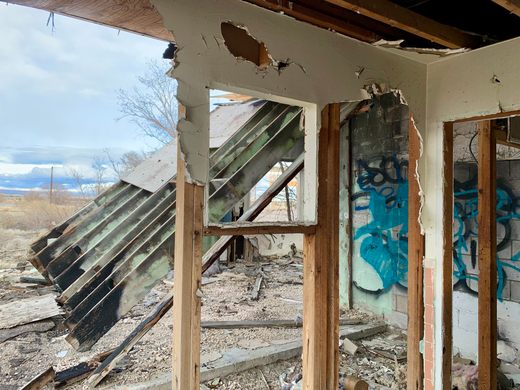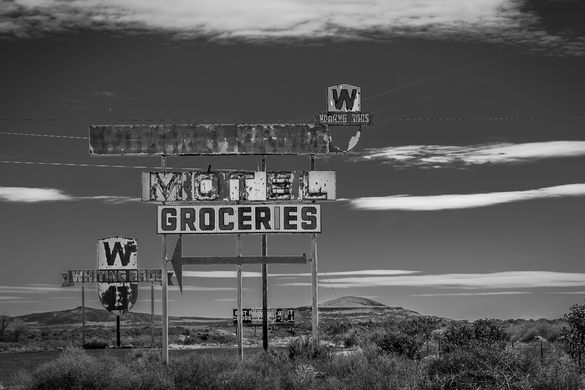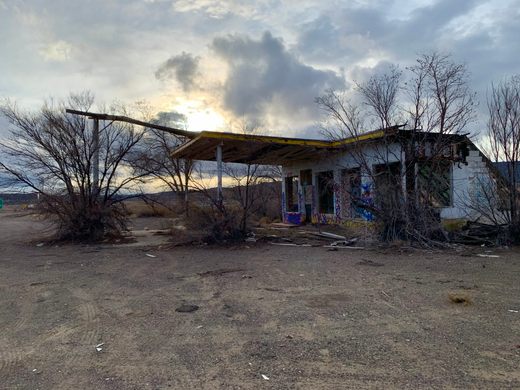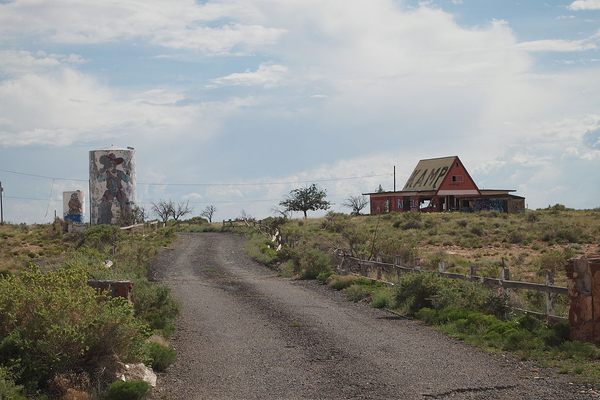Budville Trading Post
In 1967, murder and mayhem disrupted the tranquility along this quiet stretch of Old Route 66.
Howard Neal “Bud” Rice was a commanding personality in Budville (his namesake), a tiny community along a quiet stretch of Route 66, 46 miles west of Albuquerque, New Mexico. Beginning in 1928, two years after the establishment of Route 66 as part of the U.S. Highways System, Rice and his wife, Flossie, began building and operating a number of businesses catering to travelers along the Mother Road. These included a grocery, trading post, gas station, and the only automotive repair shop and wrecking service between Albuquerque and Grants. They also operated the Continental Trailways bus depot and local office of the New Mexico Department of Motor Vehicles.
Rice was effective in cultivating close relationships with local law enforcement and political operatives. During the 1950s, he became the local Justice of the Peace and considered himself the “law west of the Pecos River.” While Rice was beloved locally, he wasn’t entirely scrupulous, and often used his position to further his various business interests by exploiting travelers along Route 66.
He frequently overcharged for auto repairs and imposed onerous “fines” for speeders caught in his various speed traps. In the 1960s, when construction of Interstate-40 threatened to bypass Budville and adversely affect his business interests, Rice and his political cronies somehow ensured that the highway plans included an exit and on-ramp for tiny Budville.
But Rice’s crooked ways soon came to an end. On a quiet evening in November of 1967, a stranger entered the trading post and brutally shot and killed Rice and a part-time employee, 82-year-old Blanche Brown. The assailant escaped with $450. He left behind a horrific scene, which the locals dubbed “Bloodville.”
Several months later, based on the testimony of three felons, the assailant was identified as Billy Ray White. In August of 1968, he was apprehended in Illinois and brought to New Mexico to stand trial. Because of insufficient credible evidence, he was quickly acquitted of the murders. He was, however, extradited to Louisiana and stood trial for similar crimes committed before the murders in Budville. He was convicted and sentenced to a long-term facility in the Louisiana state penitentiary. Before his death by apparent suicide in 1974, White allegedly confided to a fellow inmate that he was, in fact, guilty of the Budville murders. Few people place credence on the confession and for the most part, the murders are still considered unsolved.
After Rice died, his widow continued to run the trading post and other family businesses for another 12 years until her death in 1979. The property was sold and re-sold a number of times since then. It was briefly re-opened as the Budville Trading Company. In 2006, there were plans to once again open the Trading Company, but that was never successful. It continues to be abandoned, but the adjoining house, where the Rices lived, is occupied by the current owners. Because of its tawdry history, the building today is probably one of the most frequently photographed landmarks along the New Mexico stretch of historic Route 66.
Know Before You Go
While not immediately visible from the highway, Budville is located along Route 66 which is adjacent to and just north of Interstate-40. Thanks to Bud Rice, there is an exit and on-ramp to Budville; Exit 104 about 46 miles west of Albuquerque. Turn left on Route 66 and drive approximately one mile to the Budville Trading Company on the left.























Follow us on Twitter to get the latest on the world's hidden wonders.
Like us on Facebook to get the latest on the world's hidden wonders.
Follow us on Twitter Like us on Facebook